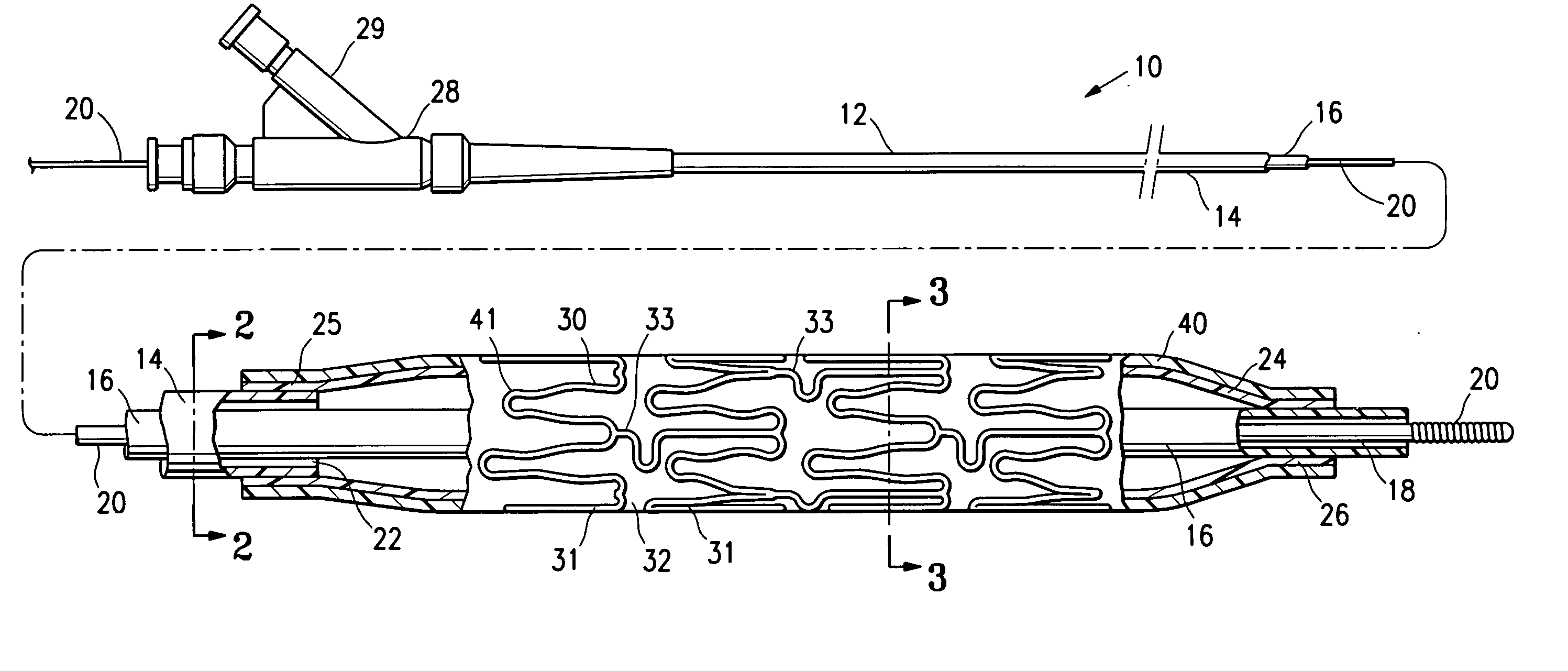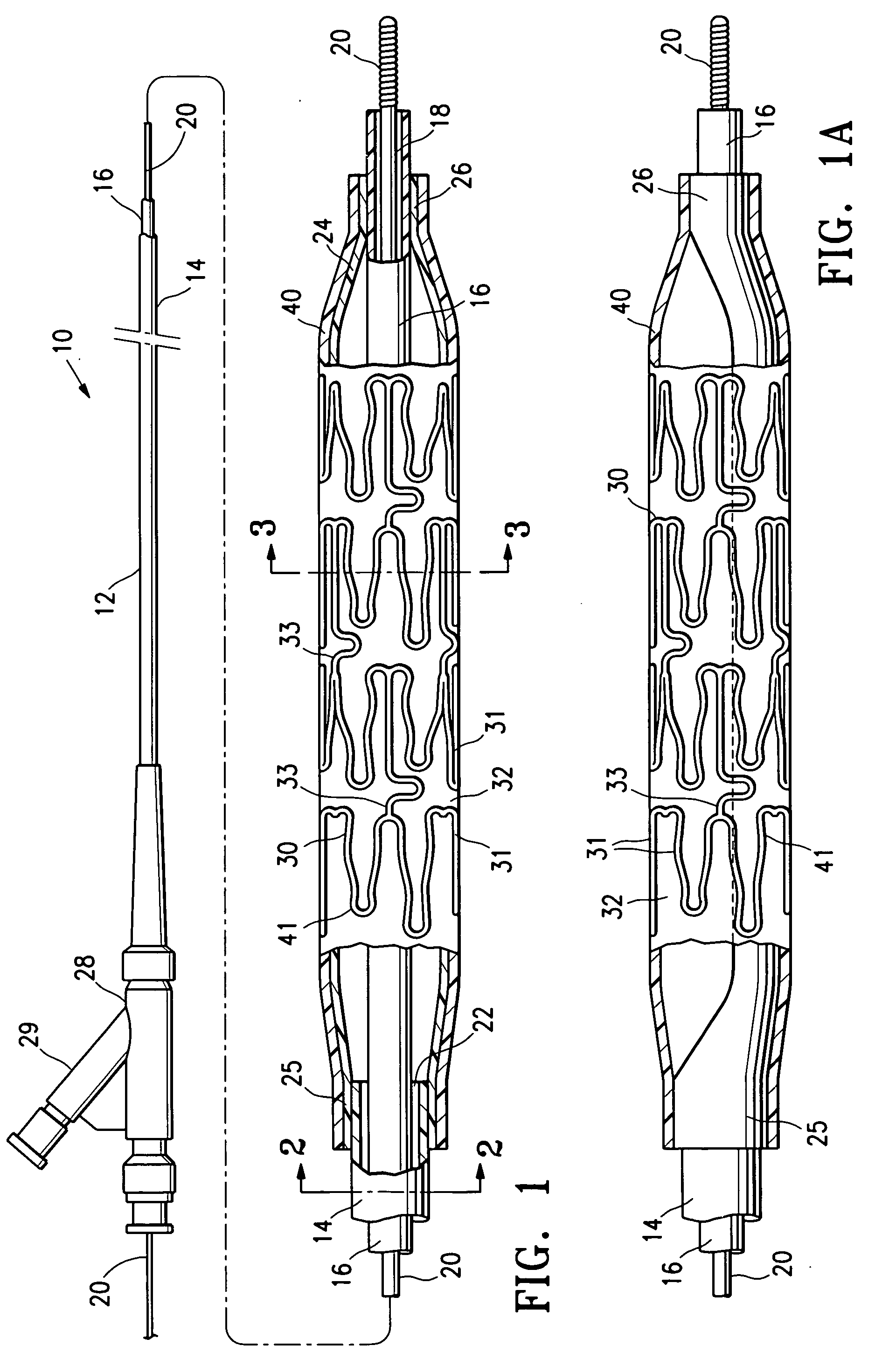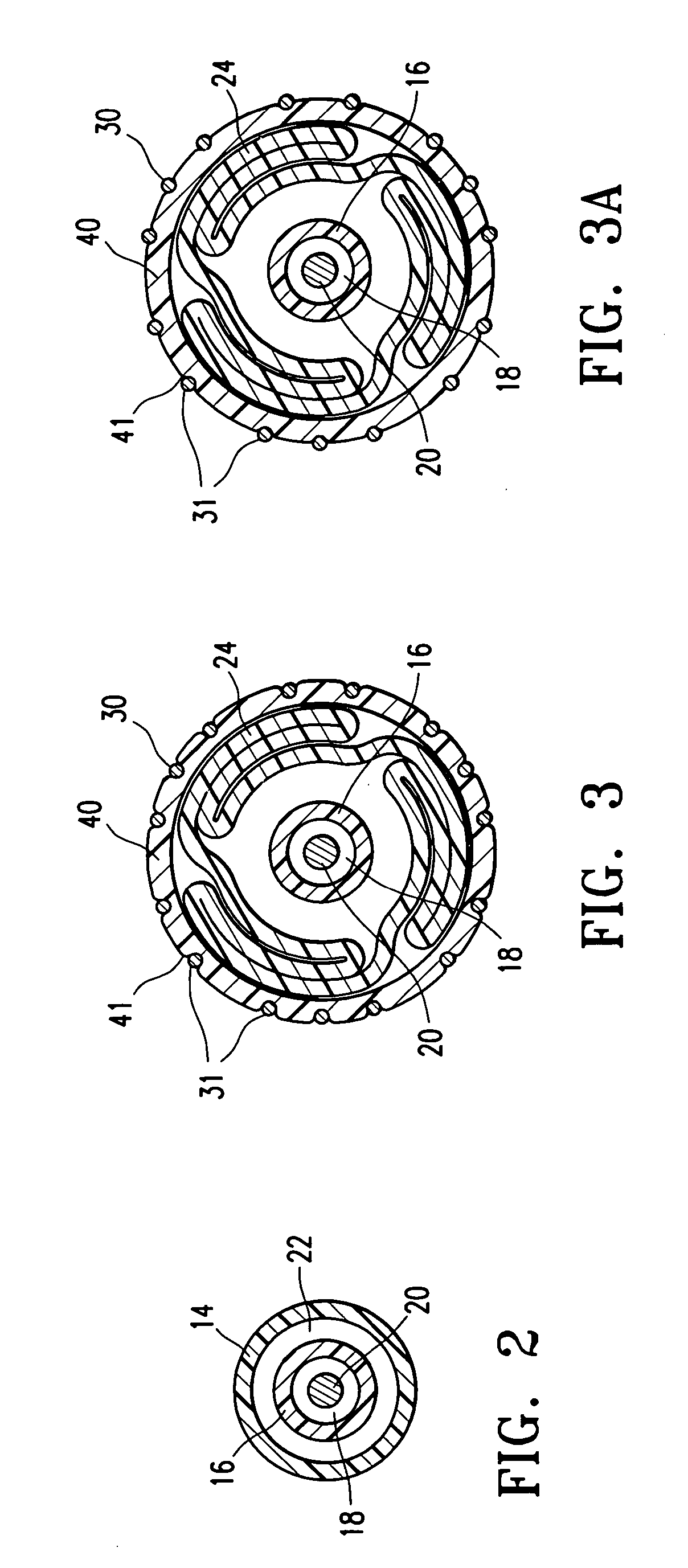Stent delivery balloon catheter having improved stent retention
a balloon catheter and stent technology, applied in the field of catheters, can solve the problems of balloon rupture pressure, stent cannot be so strongly fixed to the balloon, and the system cannot correctly implant the stent into the body lumen, etc., to achieve the effect of reducing the rupture pressure of the balloon, facilitating securely mounting the stent, and maximizing mechanical interferen
- Summary
- Abstract
- Description
- Claims
- Application Information
AI Technical Summary
Benefits of technology
Problems solved by technology
Method used
Image
Examples
Embodiment Construction
[0026]FIG. 1 illustrates an over-the-wire type stent delivery balloon catheter 10 embodying features of the invention. Catheter 10 generally comprises an elongated catheter shaft 12, an inflatable balloon 24 on a distal shaft section, an elastomeric sleeve 40 on the balloon 24, and a stent 30 mounted on the sleeve 40. In the illustrated embodiment, the shaft comprises an outer tubular member 14 defining an inflation lumen 22 therein, and an inner tubular member 16 defining a guidewire lumen 18 therein configured to slidingly receive a guidewire 20. Specifically, in the illustrated embodiment, the coaxial relationship between outer tubular member 14 and inner tubular member 16 defines annular inflation lumen 22, as best shown in FIG. 2 illustrating a transverse cross section of the distal end of the catheter shown in FIG. 1, taken along line 2-2. In the embodiment illustrated in FIG. 1, the guidewire lumen 18 extends to the proximal end of the catheter. Inflatable balloon 24 has a pr...
PUM
 Login to View More
Login to View More Abstract
Description
Claims
Application Information
 Login to View More
Login to View More - R&D
- Intellectual Property
- Life Sciences
- Materials
- Tech Scout
- Unparalleled Data Quality
- Higher Quality Content
- 60% Fewer Hallucinations
Browse by: Latest US Patents, China's latest patents, Technical Efficacy Thesaurus, Application Domain, Technology Topic, Popular Technical Reports.
© 2025 PatSnap. All rights reserved.Legal|Privacy policy|Modern Slavery Act Transparency Statement|Sitemap|About US| Contact US: help@patsnap.com



